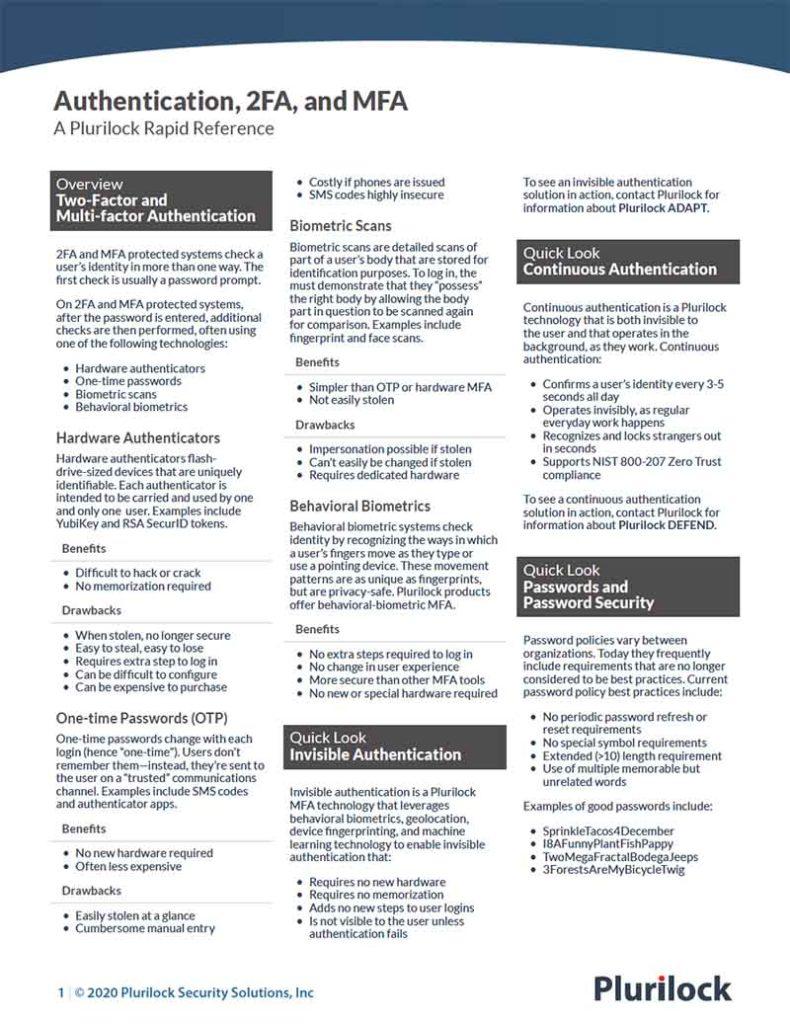Cybersecurity Reference > Glossary
Attack Surface
An attack surface consists of all of the possible attack vectors that exist within a network.
An organization’s security team will try to reduce its attack surface by limiting what portions of the network are exposed to the internet, reducing the number of endpoints on the network to the bare minimum, reducing the number of identities used by uses, limiting the number of administrators capable of changing the network, consolidating valuable resources into segmented partitions, etc. Anything that could provide an initial foothold or avenue towards a high-value resource is an attack surface. Examples include, users, desktop computers, laptops, servers, websites, API endpoints, operating systems, software, physical network access points.

2FA/MFA Rapid Reference
Authentication at a glance
Download the 2FA/MFA Rapid Reference now:
- 2FA and MFA basics and common solutions
- The benefits and drawbacks of each
- Glossary of authentication terms
2FA/MFA Rapid Reference
- 2FA and MFA basics and common solutions
- The benefits and drawbacks of each
- Glossary of authentication terms








